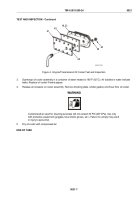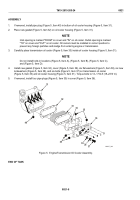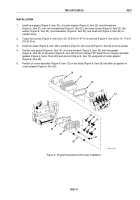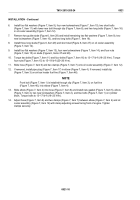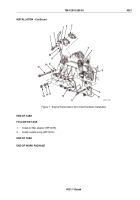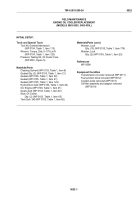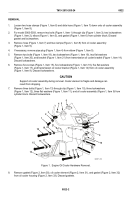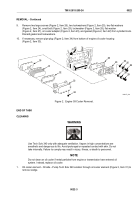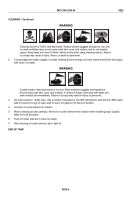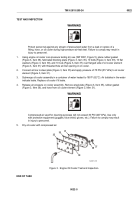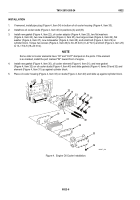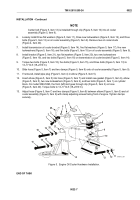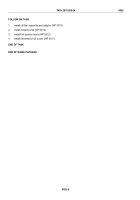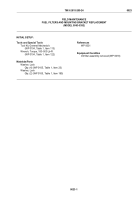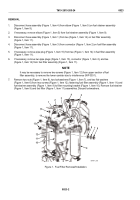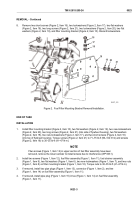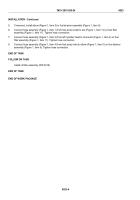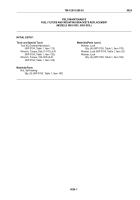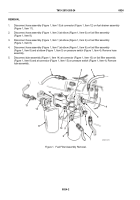TM-9-2815-205-24 - Page 167 of 856
TEST AND INSPECTION
WARNING
Protect personnel against any stream of pressurized water from a leak or rupture of a
fitting, hose, or oil cooler during high-pressure air-leak test. Failure to comply may result in
injury to personnel.
1.
Using engine oil cooler core pressure testing kit, see (WP 0081, Figure 5), place rubber gasket
(Figure 3, Item 36), fabricated blocking plate (Figure 3, Item 35), 10 bolts (Figure 3, Item 39), 10 flat
washers (Figure 3, Item 38), and 10 nuts (Figure 3, Item 37) over flanged side of oil cooler element
(Figure 3, Item 31) with threaded hole at inlet opening in oil cooler.
2.
Connect air line to steel plate (Figure 3, Item 35) and apply pressure of 75 PSI (517 kPa) to oil cooler
element (Figure 3, Item 31).
3.
Submerge oil cooler assembly in a container of water heated to 180°F (82°C). Air bubbles in the water
indicate leaks. Replace oil cooler if it leaks.
4.
Release air pressure on cooler assembly. Remove steel plate (Figure 3, Item 35), rubber gasket
(Figure 3, Item 36), and hose from oil cooler element (Figure 3, Item 31).
WARNING
Compressed air used for cleaning purposes will not exceed 30 PSI (207 kPa). Use only
with protective equipment (goggles, face shield, gloves, etc.). Failure to comply may result
in injury to personnel.
5.
Dry oil cooler with compressed air.
35
39
36
37
31
38
MAINT_065
Figure 3.
Engine Oil Cooler Test and Inspection.
END OF TASK
TM 9-2815-205-24
0022
0022-5
Back to Top

